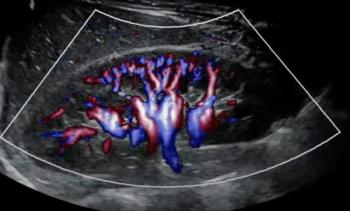
Imatron lauds cardiology studies
CT developer Imatron is makingthe most of three articles published in the September editionof Radiology. The articles, two of which were written by NationalInstitutes of Health researchers, add to a growing body of researchsupporting the use of Imatron's
CT developer Imatron is makingthe most of three articles published in the September editionof Radiology. The articles, two of which were written by NationalInstitutes of Health researchers, add to a growing body of researchsupporting the use of Imatron's ultrafast CT technology to detectearly signs of coronary artery disease.
Imatron has positioned its technology as a useful tool to screenfor coronary arteriosclerosis in patients who have no historyof the disease. Imatron's scanners are capable of detecting smallcalcium deposits in the heart, which can be a precursor to pathology,according to the company (SCAN 4/6/94). Should the technique proveefficacious, the potential market for the scans could be huge,the company believes.
The first of the Radiology articles, authored by researchersfrom the Mayo Clinic and the University of Michigan, concludedthat small calcium deposits only 2 sq mm in area can provide areliable indication of coronary artery disease.
One of the NIH papers, authored by Dr. Gisela C. Mautner, concludedthat the amount of coronary artery calcium detected by Imatron'sscanner corresponded with the actual amount of calcium presentin over 4000 coronary artery samples. The amount of calcium alsoreflected the degree of coronary artery narrowing.
The second NIH paper, authored by Dr. Susanne L. Mautner, confirmedthat ultrafast CT had a 94% sensitivity in detecting calcium depositsin atherosclerotic plaques. The paper concluded that ultrafastCT "could be an important tool in measuring the progressionor regression of coronary artery disease."
Imatron's ultrafast CT scanners are marketed by Siemens asEvolution EBT. Imatron, of South San Francisco, CA, also providescoronary artery disease scanning directly to the public throughits HeartScan Imaging subsidiary.
Newsletter
Stay at the forefront of radiology with the Diagnostic Imaging newsletter, delivering the latest news, clinical insights, and imaging advancements for today’s radiologists.




























